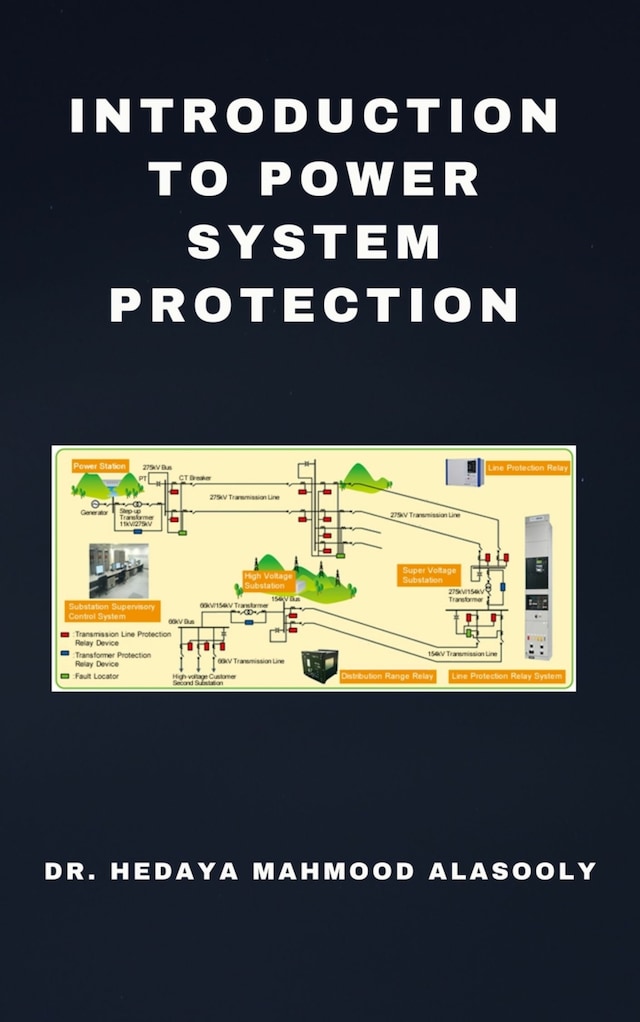
Introduction to Power System Protection
Tietoa kirjasta
Power system protection systems have three basic components: Instrument transformers, Relays, Circuit breakers
The function of the CT is to reproduce in its secondary winding a current I’ that is proportional to the primary current I. The CT converts primary currents in the kiloamp range to secondary currents in the 0–5 ampere range for convenience of measurement.
The function of the relay is to discriminate between normal operation and fault conditions. The OC relay in Figure 2 has an operating coil, which is connected to the CT secondary winding, and a set of contacts. When |I’| exceeds a specified ‘‘pickup’’ value, the operating coil causes the normally open contacts to close. When the relay contacts close, the trip coil of the circuit breaker is energized, which then causes the circuit breaker to open.
System-protection components have the following design criteria:
Reliability: Operate dependably when fault conditions occur, even after remaining idle for months or years. Failure to do so may result in costly damages.Selectivity: Avoid unnecessary, false trips.Speed: Operate rapidly to minimize fault duration and equipment damage. Any intentional time delays should be precise.Economy: Provide maximum protection at minimum cost.Simplicity: Minimize protection equipment and circuitry.
Since it is impossible to satisfy all these criteria simultaneously, compromises must be made in system protection.
The book consists from the following sections:
Chapter 1: Power System Faults:Chapter 2: Instrument Transformers.Chapter 3: Overcurrent and Earth Fault Protection Relays.Chapter 4: Radial System Protection.Chapter 5: Zones of Protection.Chapter 6: Differential Relays.Chapter 7: Distance Relays.Chapter 8: Transformer Protection.Chapter 9: Generator Protection.Chapter 10: Busbar Protection.Chapter 11: Circuit Breakers.Chapter 12: Fuses.Chapter 13: References.
 Dr. Hedaya Alasooly
Dr. Hedaya Alasooly 88 Sivua
88 Sivua